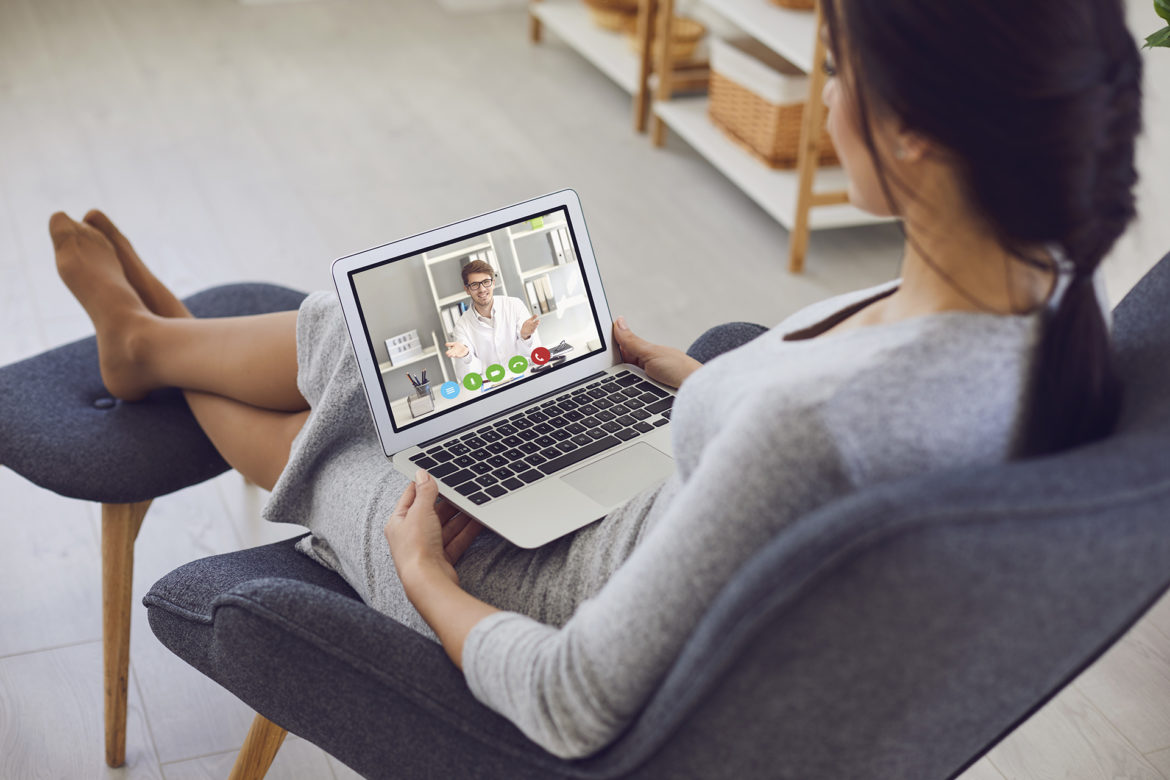Imagine a circle. Now picture that circle growing increasingly larger. That’s an accurate image for answering the question – “what is teledentistry?”
The circle is certainly expanding to reveal the many ways it can impact dental care.
Before we cover the “how” let’s focus on what teledentistry is.
Understanding telehealth helps answer the question – “what is teledentistry”
Telehealth covers a the broader category of telemedicine. And teledentistry would fit within that scope.
Practical applications of telehealth would include:
- Live (synchronous) video chat
- (Asynchronous) Capability to store-and-forward radiographs, photos, video, and digital impressions to a practitioner via a secure electronic communications system. A related diagnosis or provider service would follow.
- Remote patient monitoring (RPM) for the purpose of collecting personal health and medical data via electronic medical device technologies. Data can be transmitted to another location giving the provider access and the ability to monitor related health conditions and support delivery of care.
- Mobile health provisions for health care education delivered through mobile communication devices such as smartphones and tablets.
These same capabilities would be available within teledentistry as well.
So, what is teledentistry?
An expanded view of how technology is used within telemedicine in general will add to your understanding of teledentistry’s potential.
You, the dentist, and patient remain as the common denominators. The technology available to each of you gives teledentistry it’s viability for oral health care.
Like telehealth there are synchronous and asynchronous applications that apply to teledentistry.
- A (synchronous) livestream of data or video conferencing between you and your patient or in some cases, a specialist.
- An (asynchronous) capability to store-and-forward data from an onsite provider. Exam data can be batched, assigned to a provider, and triaged. You can also send treatment plan data/recommendations to a remote provider and patient when convenience is a factor.
Who can benefit from teledentistry?
Teledentistry increases your capacity as a dentist to provide necessary dental care. The digital benefits of teledentistry broadens your reach to…
- Patients located in rural areas, those would otherwise postpone or delay dental care, or those without convenient access to a dental provider.
- Dental hygienists who provide offsite preventive care or screenings. Gathered data can be digitally delivered to you onsite for diagnosis and necessary follow-up care protocols.
- Specialists interactions are streamlined for more seamless referrals and required follow-up appointments. Necessary documentation and imaging is available in a single, secure, easily accessible digital location.
- Connections with new patient health histories affiliated with pediatricians, physicians, and skilled nursing facilities are enhanced.
DSO clinical leaders have renewed ability to deliver necessary clinical leadership and management to supported dentists.
- Quality control and productivity systems can be expanded via remote access.
- Virtual communications can quickly connect multiple partner practices, group practices, or solo provider practices for training and case evaluations.
How does teledentistry improve access to dental care for rural areas or those lacking convenient, cost-effective access to dental care?
For some dentistry is delayed due to convenience. Others in more rural areas are isolated…

